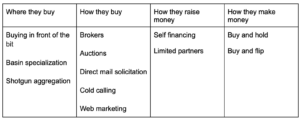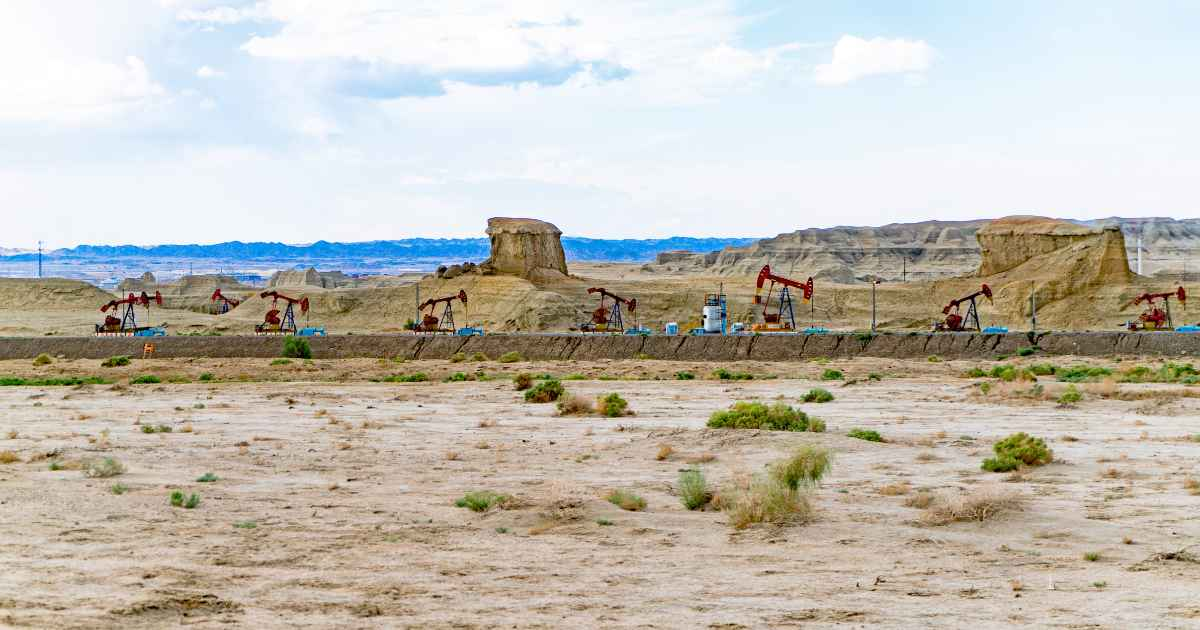Do you have oil and gas royalty interests that you’re looking to sell but don’t know how to find anybody who wants them? Unfortunately, selling oil and gas royalties isn’t a simple matter of calling a local realtor. Oil and gas royalties are not as widely owned as single family homes and consequently, no army of service providers is standing by to help you.
But never fear! Just read on to learn how you can find companies that buy oil and gas royalties and successfully navigate the process to sell your oil and gas royalties for top dollar.
For those who are new to the world of oil and gas royalties, many of the related concepts and jargon can sound like a foreign language. If you’re thinking “That’s me!”, then you might want to take a quick crash course by reading the Ultimate Seller’s Guide for Oil and Gas Royalties before continuing on to learn about the world of oil and gas royalty buyers, or check out the video below. But if you’re following the lingo so far, let’s continue!
Types of Companies that Buy Oil and Gas Royalties
How to go about finding oil and gas royalty buyers depends on which type of buyer applies to you. Let’s take a look at the main kinds of oil and gas royalty buyers to narrow it down.
Large corporate oil and gas royalty buyers

These big companies are listed on the stock market and buy and hold large blocks of oil and gas mineral acreage that generate millions of dollars of royalty income each year. These companies do not buy directly from individuals and families with small holdings of oil and gas royalties. One example of these large corporations is Sito Royalties (NYSE: STR).
Private equity funds that buy oil and gas royalties
These mid-sized companies are not publicly traded corporations but instead raise substantial funds from deep-pocketed investors to buy and hold mid-sized to large blocks of mineral acreage generating substantial royalty income. These companies also typically do not buy small holdings from individual and family owners of oil and gas royalties. Noble Royalties Inc. is an example of these private-equity buyers of oil and gas royalties.

Small independent oil and gas royalty buyers
These smaller companies specialize in buying the mineral and royalty holdings of individuals and families who are not oil and gas professionals and typically provide a high level of service in carrying out these transactions. American Land and Minerals, LLC is a leading example of these small independent oil and gas royalty buyers.

If you’re still reading this article, you’re likely not looking for a large corporation or private equity fund to buy your oil and gas royalties since they only buy from the pros – and pros already know how to find them! In the sections below, we’ll delve further into the world of small independent oil and gas royalty buyers so you can feel like a pro in finding a buyer for your family royalty interests.
Strategies of Small Independents that Buy Oil and Gas Royalties
Finding the best company to buy your family oil and gas royalty interests requires that you pick one that is most interested in what you have to sell. To better understand this, let’s look into the strategies that small independent royalty buyers pursue in their businesses.
The following table outlines the major strategic choices that independent royalty buyers make when crafting their business models.


Independent royalty buyers typically pursue one of three strategies related to where they buy. Some “buy in front of the bit”, which means that they carefully track where oil companies are planning to drill next and contact mineral owners who own mineral acreage in those areas. Some go to great lengths to get the inside scoop on drilling plans so they can buy on the cheap from owners who have no idea that drilling is coming their direction. It’s important to know if you’re negotiating with a royalty buyer that buys in front of the bit because you could wind up leaving a lot of money on the table if you’re not careful.

Other royalty buyers specialize in buying in specific basins around the country. Basins are geographic areas where broad geological formations exist far underground where the ingredients for oil and gas were deposited during ancient times. One example is the prolific Permian Basin in West Texas and Eastern New Mexico, where a large percentage of total US oil production comes from. Many royalty buyers are laser focused on specific basins where they have the technical expertise to assess the potential remaining revenue from existing wells and the upside potential of un-drilled well locations.

Still other royalty buyers buy all over rather than specializing in any specific geographies, seeking to lower the overall risk of their royalty portfolios through diversification. For instance, imagine royalties from wells in one region of the country that come mostly from oil and royalties from wells in another region that come mostly from natural gas. A “shotgun aggregator” that buys in both areas achieves more stable royalty income than a buyer specializing in only one because the prices of oil and natural gas don’t go up and down at the same rate and wash out each other’s volatility to some degree.

Oil and gas royalty buyers also differ in how they go about buying royalties. Some rely heavily on brokers who the pros hire to market their large mineral packages. Others buy at auctions where the pros sell royalty packages of various sizes. Then there are others that go to greater lengths to assemble databases of mineral owners and mail them solicitation letters, or cold call them, or both. And lastly, many royalty buyers conduct web marketing campaigns to generate royalty deal leads.
When it comes to raising money to fund their royalty purchase programs, some royalty companies self fund while others raise money from third parties called limited partners who must be paid back first including a share of the profits before the company owners get to pay themselves.
Lastly, some royalty companies make money through a buy and flip strategy whereby they attempt to buy low at wholesale prices and then sell high at retail prices to other royalty buyers. Other royalty companies buy and hold for the long term, hoping to recoup their original purchase price and then collect profits from continuing royalty checks until the wells finally run dry.

The royalty company that’s the best fit for you will likely be one whose strategy lines up the best with the royalties you have to sell. For instance, if you own royalty interests in the Permian Basin, then royalty companies that specialize in the Permian Basin are the most likely to extend aggressive offers in hopes of being the winning bidder. Likewise, if you know drilling is about to begin on your mineral acreage, you’ll want to find buyers who are accustomed to buying in front of the bit – and you’ll want to get multiple bids to ensure they pay handsomely for the upside potential!
Doing your homework to find multiple companies online whose business models align with what you have to sell is key to getting a good price.
Now let’s turn to the process you must navigate when selling to these royalty buyers.
How it works when selling to oil and gas royalty buyers
Small, independent royalty buyers differ in their buying processes, but in general most follow a handful of common steps.
Typical Steps in Selling to Royalty Buyers
- Seller supplies property info for buyer’s review
- Buyer evaluates property info and makes an offer
- Buyer and seller negotiate a price
- Buyer conducts pre-closing due diligence
- Buyer prepares closing documents and sends to seller
- Seller executes closing documents and buyer pays seller
When you first make contact with a royalty buyer, you can expect them to ask you to supply information about your mineral and royalty holdings. The main thing they’re likely to request is copies of your most recent check stubs. This means the detailed printout that comes with the actual check itself showing how the check amount was calculated, including the names of the wells, the volumes of oil and gas, the prices for oil and gas, deductions for taxes, your royalty share in the well (called a decimal of interest or DOI) and the net amount paid to you broken down by production month. The royalty company requires this information to verify what you own and your income. They might also ask for other documents related to your property, such as your mineral deed and lease documents. The more documentation you can supply the better, but royalty buyers are typically accustomed to working with what you have.
Next, the royalty buyer will evaluate the information you supplied and gather additional data on your properties to determine an offer amount. Most royalty buyers have technical oil and gas experts on staff to conduct these evaluations. They study the production history of the wells and the geology of the area in forecasting how much production is possible in the future. This work is typically done using sophisticated software that factors in forecasted future oil and gas prices and many other factors to determine an appraised value for your royalty holdings.
A company representative then contacts you to make a firm offer. Like selling a home or a car, it is always advisable to negotiate when selling oil and gas royalties. Soliciting competitive bids is also a good idea, as it provides greater leverage in getting royalty buyers to increase their offers.
Upon coming to an agreement on price, the royalty buyer typically requires a period of time to perform due diligence before closing. The main thing they do at this stage, if they haven’t already, is “run title”, which means they check the chain of title on your mineral holdings to ensure that you own them free and clear of any encumbrances, such as liens or lawsuits.
Then the royalty buyer typically prepares closing documents at their expense, if they haven’t already done so. The closing documents are typically a purchase and sale agreement and a mineral and royalty conveyance (or deed). The purchase and sale agreement is a contract that lays out the key terms and conditions of the transaction and is often prepared and executed just after a verbal agreement is reached. The mineral and royalty conveyance is the key document that transfers legal title and must be recorded at the county clerk’s office where the wells are located. The seller must sign and have the conveyance notarized, and the royalty buyer typically takes care of the recording process along with the rest of the paperwork at their expense.
Finally, the royalty buyer pays you the agreed upon amount. This is often done by wire, check or cashier’s check at your option.
While this is the last step in the process for you, the royalty buyer still has more work to do. For instance, they must notify the oil and gas companies that have been sending you royalty checks about the transaction so they can make the cutover for future checks. The paperwork involved in transferring title to minerals and royalties is very painstaking, and delegating it all to the royalty buyer is a big benefit of selling to them.
The time that this process takes from making first contact to receiving final payment can vary widely depending on the royalty buyer, the complexity of your royalty holdings, and your ability to complete your steps quickly. A typical royalty buyer can complete the process in about a month for a reasonably straightforward set of royalty holdings and with prompt cooperation from the seller. There are some royalty buyers who are willing and able to expedite the process, so it’s important to let them know up front if time is of the essence.
Conclusion
Oil and gas royalty interests are complicated assets and no user-friendly service industry exists to help non-experts sell their family royalty holdings. However, there are companies who specialize in family transactions; and these royalty buyers typically handle all the complicated paperwork so you don’t have to.
Finding the best royalty buyer for you requires researching these companies online and soliciting offers from ones that target the kind of royalty interests that you own. These companies pursue a variety of strategies and business models, and you can increase your odds of getting the best price if you have the time and patience to find out what makes them tick. The extra work to solicit more than one offer is also advisable to increase your negotiating leverage.
The paperwork involved in transferring title to oil and gas royalties can be very complicated, and leaving these details to a specialty royalty buyer is an added benefit.
Navigating the process smoothly requires your prompt attention at certain steps; and if time is of the essence, there are some companies that move more quickly, especially if you request expedited service up front.
Congratulations! Now you know how to find a company to buy your oil and gas royalties for the best price and navigate the process like a pro. Good luck!
Royalty Buyer Spotlight: American Land and Minerals LLC
One of the most prolific independent oil and gas royalty buyers over the past two decades is American Land and Minerals LLC (ALM). ALM has completed over two thousand royalty transactions since it started up just after the turn of the millennium. ALM pursues a “shotgun aggregator” strategy, buying royalties in wells located in all producing basins of the continental 48 states. ALM generates royalty deal leads through direct mail campaigns using a proprietary royalty owner database and web marketing. ALM buys its royalty holdings with money from in-house equity investors and holds some royalty holdings while flipping others. ALM endeavors to stand apart from the competition by making the process as fast and smooth as possible for its mainly family-oriented customers. ALM’s chief of acquisitions, Kirby King, had this to say about the company, “We’ve found over our many years of working with royalty owners that they have very busy lives and value our streamlined process and our friendly customer service.”
